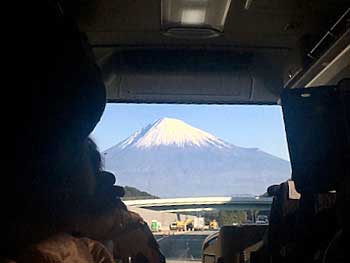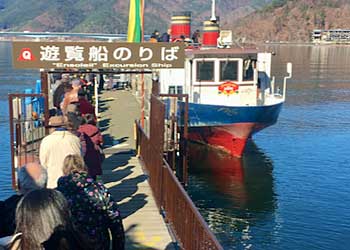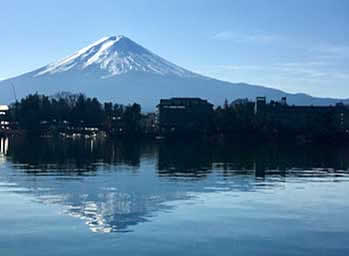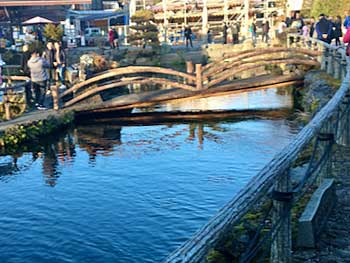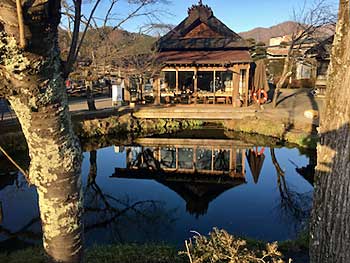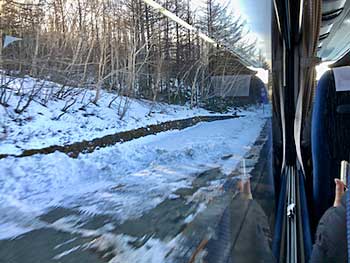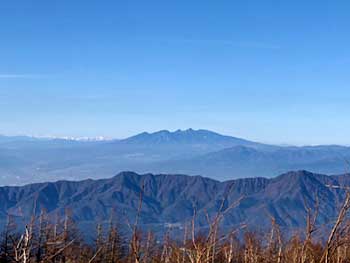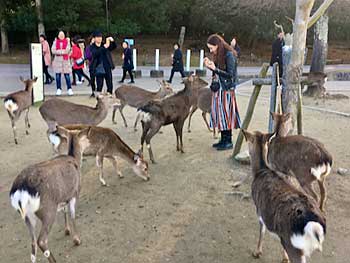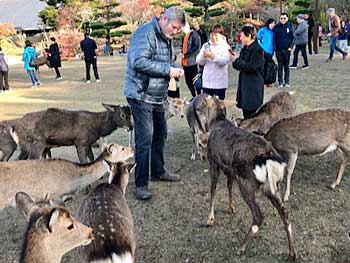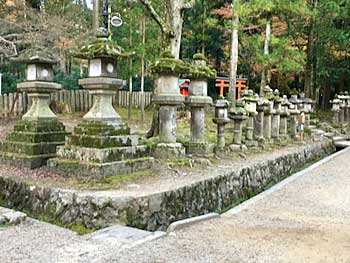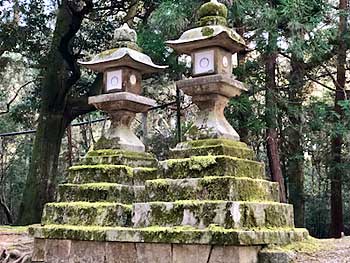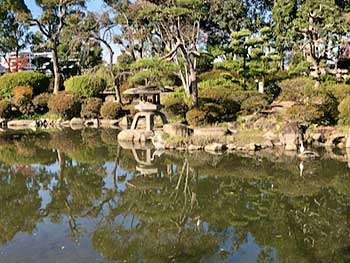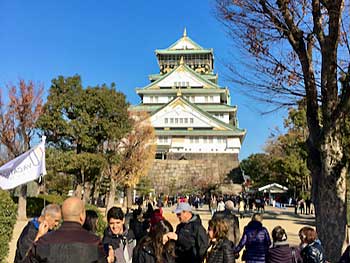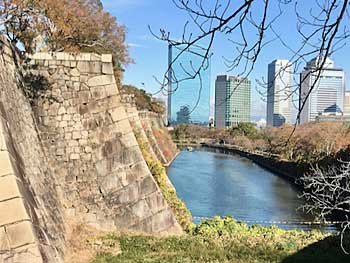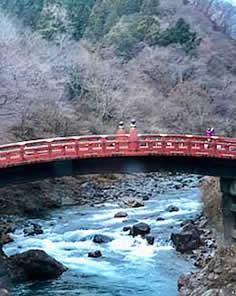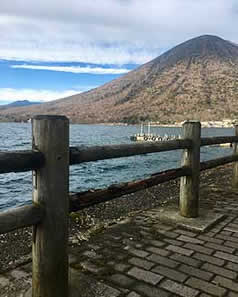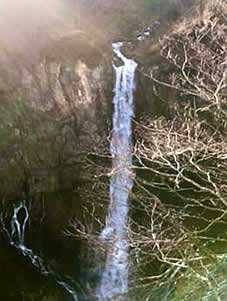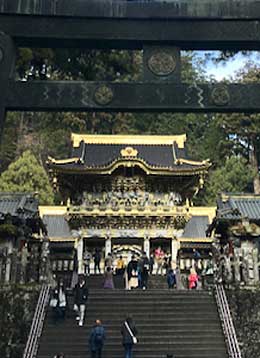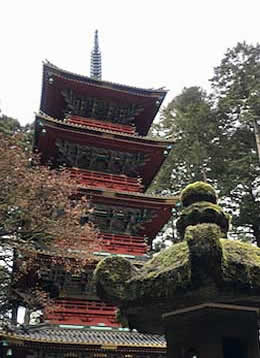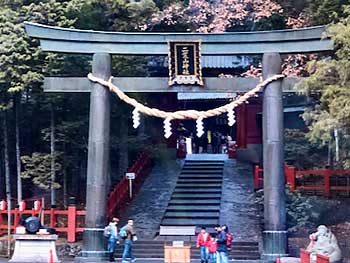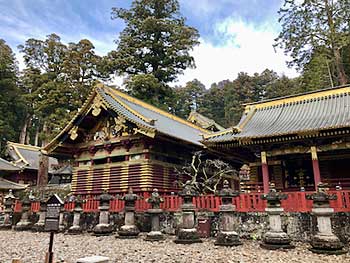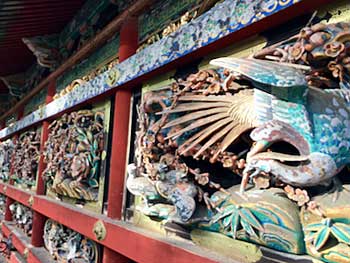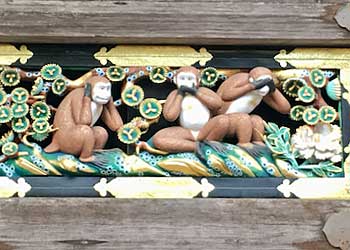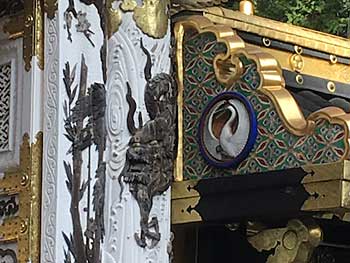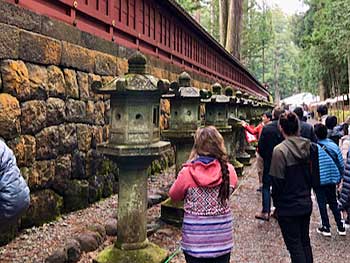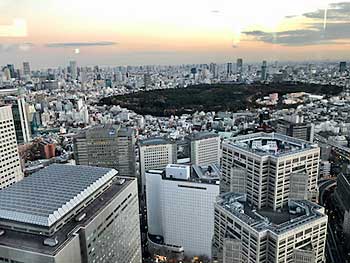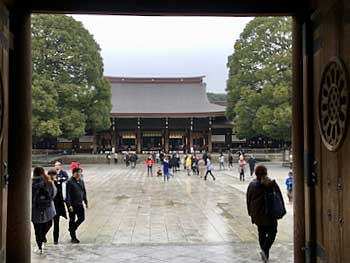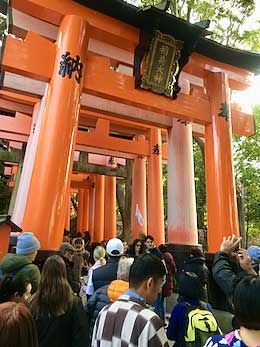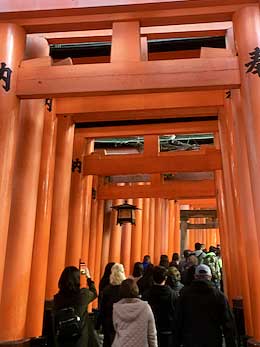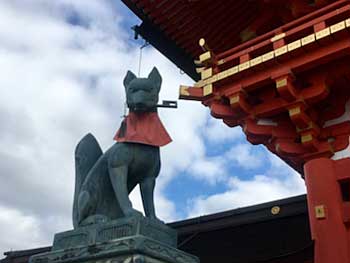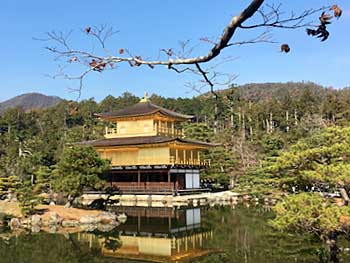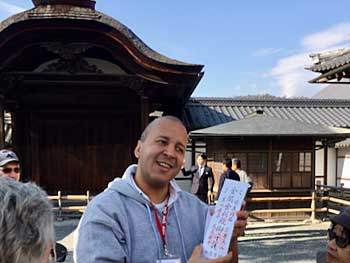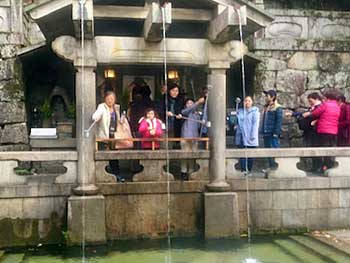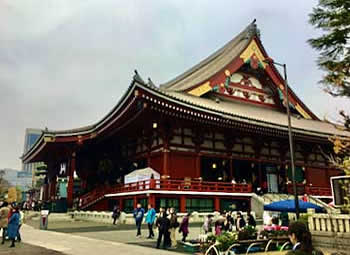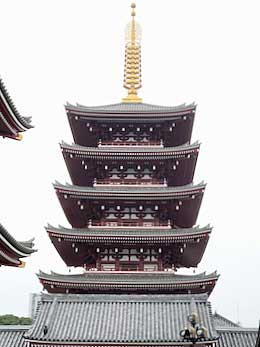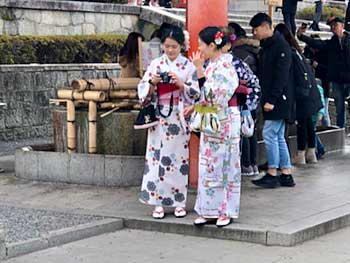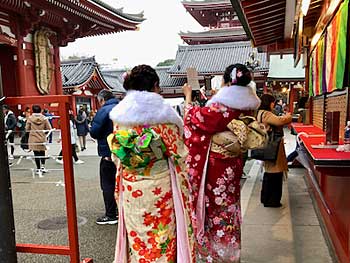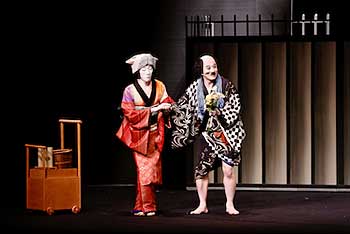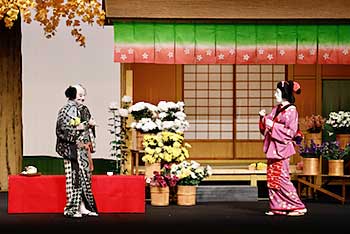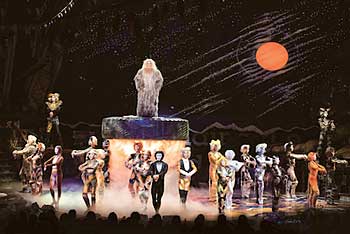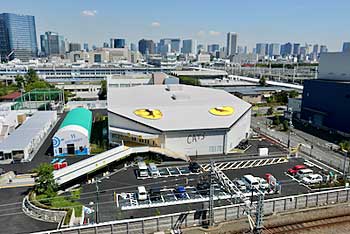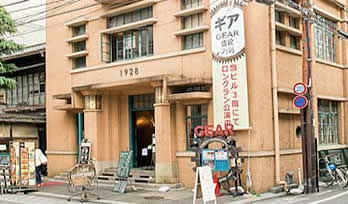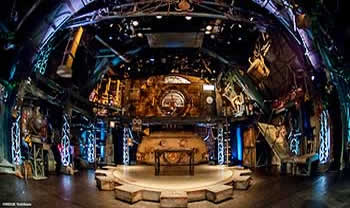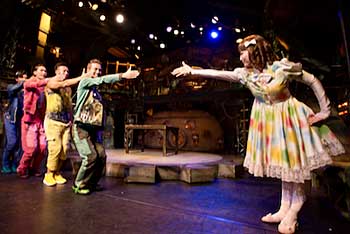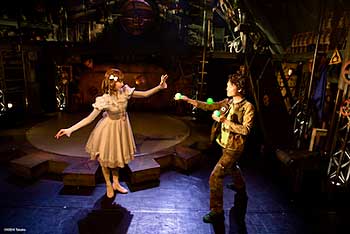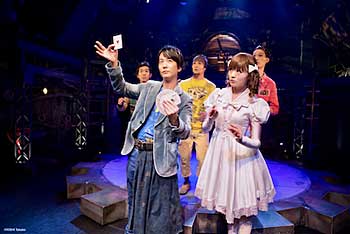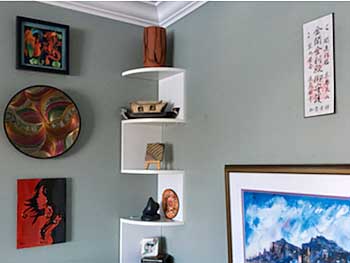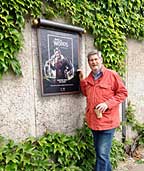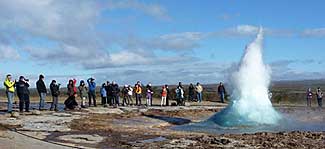
High on Adventure
MAR/APR 2021, OUR 25TH YEAR
Looking Back to Travel Before Covid |
|||||||||||||||||||||||||||||||||||||||||||||||||||||||||||||||||||||||||||||||||||||||||||||||||||||||||||||||||||||||||||||||||||||||||||||||||||||||||||||||||||||||||||||||||||||||||||||||||||||||||
While Japan is among the most demographically homogeneous nations on Earth, it features amazingly diverse offerings for the visitor. Many may want to concentrate on the modern skyscraper-dominated skylines and urban attractions, but the nation offers so many ancient temples, shrines, castles, parks and natural features out of doors that they deserve a feature of their own. If you really need to go indoors, however, we can take a look at some of the attractions in the performing arts that compete for your time after the sun goes down.
Perhaps Mount Fuji is the image that comes most readily to mind. Our first view of the peak came through the windshield of a bus as we motored north from the ancient capital of Kyoto to the modern capital of Tokyo. We took a detour to Lake Kawaguchi some 2,600 feet up the base of Mount Fuji. That put us less than a quarter of the way up to the peak which is at 12,382 feet! Kawaguchi is one of five lakes formed by eruptions of Mount Fuji and boasts fabulous views of the mountain from tour boats. Naturally, we joined the other tourists onboard so we could take photos of the mountain from the water.
From there we went further up Mount Fuji, and stopped at the village of Oshino Hakkai with its collection of ponds or pools fed by snow runoff from the mountain. Hakkai, means “eight seas.” Our guide told us a sample of this very pure water was sent in 1983 aboard the Space Shuttle Challenger to the International Space Station for use in an experiment to make snow in zero gravity. I’ve been unable to verify that story, but it is way too interesting not to pass it on.
The bus continued up the mountainside to the highest point that vehicles are allowed. It is the fifth of nine stations for hikers and campers up the side of Mount Fuji at about 8,000 feet. Being late December, this was well above the snow line, but I have to admit that the view down from that height is something less impressive than the view up at the mountain from all over the central portion of Honshū, Japan’s most populated island.
Another outdoor adventure awaited us at Nara Park to the east of Japan’s second most populous urban area, Osaka. Nara is most famous for the deer that have learned to coax treats from tourists. Believe it or not, if you hold a cracker in front of one of the deer, it will nod its head as if in greeting. Naturally, I had to try.
Nara is also memorable for the graceful stone lanterns that line the walkways and gardens of the park.
Gardens abound throughout Japan, and often feature one or more stone lanterns in idyllic settings. Here’s one in Osaka on the grounds of the Osaka Castle.
Of course, the garden wasn’t the only attraction on the grounds of the castle, which sits surrounded by a moat in the middle of the modern city of over two and a half million. The original castle was built more than 400 years ago, in 1585, but burned down multiple times. Finally, in 1931 a fireproof concrete replica was constructed. It was seriously damaged by bombing during World War II and was again repaired and restored.
To the north of Tokyo lies Nikkō Park. We arrived at the park via a most picturesque bridge over the Kinugawa River on the way up to Lake Chūzenji, a scenic lake at the foot of Mount Nantai. After a stop at a lake-side view spot, we re-boarded the bus for a winding ascent to one of Japan’s most famous falls, the Kegon Waterfall. Unfortunately, the falls not only attracts tourists and nature lovers, it is renowned for suicide attempts. Twenty-nine times we wound around hairpin turns before arriving at the trailhead for the short hike over to the falls. Then it was back on the bus and back down around each of those twenty-nine bends.
However, Nikkō Park is not only noted for natural wonders. Within its boundaries lies one of Japan’s most impressive Shinto shrines, so here’s a good place to begin looking at some of Japan’s temples and shrines. Nikkō Tōshōgū was established in 1617 and most of its fifty-five buildings date from 1637. Among those that impressed us were: The Yōmeimon Gate, which has been designated a National Treasure. It is the most extravagantly decorated gate in Japan with its 508 carvings of dragons, horses, mythical beasts and people representing political ideals and wisdom. It is also known by the name “higurashi-no-mon” which means “something you could look at all day.” Ishidorii or Stone Torii Gate constructed four hundred years ago of stone quarried on the island of Kyushu, the southernmost of Japan’s five main islands. Gojunoto, a five-story pagoda built and rebuilt by two feudal lords of a city named Obama. It caught my attention when I saw the plaque saying it was built by “the feudal lord of Obama.” The sacred storehouses (Sanjinko) which housed the horse harnesses and the costumes for “The Procession of 1,000 Samurai” as part of the Sacred Processions held twice a year.
The shrine boasts many, many carvings. Some, like those of the exterior wall flanking the Yōmeimon Gate are colorful and elaborate with each panel carved from a single plank of wood.
Not all the carvings seem as serious as others. The Sanzaru or Three Wise Monkeys carving - “See No Evil, Speak No Evil, Hear No Evil” - adorns the sacred stable. And hidden among more prosaic carvings is one of a crane which inspired the logo of the Japan Airlines of today.
And, of course, there are stone lantern-lined walkways.
Another Shinto shrine of note is the Meiji Shrine located in Tokyo’s Yoyogi Park, a huge oasis of open space within a crowded urban environment of the Shibuya neighborhood. The Meiji Shrine was built to honor the emperor who turned Japan from an isolated nation into an empire. Emperor Meiji died in 1912 and construction of the shrine began just three years later. The shrine was completely destroyed during the air raids of World War II; this replica was constructed in 1958.
Kyoto is famously a city of temples and shrines. One of Kyoto’s most visited Shinto shrines is Fushimi Inari-taisha … the shrine with its thousand orange Torii, or gates, framing the path up to and down from the upper shrine where a Fox with a key in its mouth symbolizes the messengers with reports on the productivity of rice granaries.
Very different from Shinto shrines are the Buddhist temples such as Kyoto’s Kinkaku-ji, or Temple of the Golden Pavilion. The current three-story pavilion with its hōō, or phoenix roof ornament, is a reconstruction dating to just 1955. Its gold leaf was replaced with thicker leaf and fresh lacquer in 1984. The setting within a strolling garden and its kyōko-chi, or mirror pond, has a profound effect on the crowds of visitors. There is a hush even where the crowds are thickest. Admission to the grounds of the Golden Pavilion is by ticket-only which our guide procured for our group. The ticket was a large paper board with an inkan or two - the red marks made by a hanko or stamp. Inkans have served as signatures and seals throughout China and Japan for centuries.
On the side of Mount Otowa to the east of Kyoto is the Temple Kiyomizu-dera, or The Pure Water Temple. Its site has a spring from which water is piped to a fountain building where it flows from three troughs. Visitors use long-handled ladles to drink water from each - for one is supposed to bring wealth, one health and one good luck.
Sensō-ji Temple, in Tokyo’s Asakusa district, is just one attraction in a complex that draws huge crowds of Japanese as well as foreign tourists. The temple is adjacent to a five story Shinto pagoda. Together they anchor a shopping and dining village. Some Japanese make a major event out of their visit, renting kimonos from local shops to get into the spirit.
You can rent a kimono to make your sightseeing more authentic.
But - what to do when the sun goes down? That’s the time to repair to a theater for a memorable performance. Japan has a lengthy history of performance art - its theater forms of Nō and Kyōgen were popularized at about the same time that Shakespeare was capturing the crown’s attention in England. Kabuki, with its combination of music, dramatic storylines, outlandish costumes and super-stylized movement may have been first performed in the same year that “Hamlet” was first printed. Bunraku, the stylized puppetry form that is still popular today, is not much younger, having begun in the late 1800s. Today there is a thriving theater community featuring traditional as well as modern formats. For a taste of the traditional, visit the National Theatre of Japan’s large theater in Tokyo which seats 1,600 patrons - about as many as the largest Broadway theaters in New York. As luck would have it, when we visited, the theater was offering a unique thrill - a revival of a 1931 kabuki adaptation of the Charlie Chaplin movie “City Lights.” Chaplin had been tremendously popular in Japan during the silent movie days. Before we attended, I called up the original movie online and read the synopsis of the Kabuki version titled “Komori No Yasusan.” That helped me follow the story, but even without it the performance of Kabuki star Matsumoto Koshiro the 10th would have made a strong impression.
More modern theater traditions can be found in plentiful supply as well. While in Tokyo we also checked out the Japanese production of Andrew Lloyd Webber’s mega-hit, “Cats” at a specially built theater that seats 1,200. This production, which looks and sounds precisely as the show did on Broadway and, I presume, in London, had been running continuously throughout Japan ever since 1983, two years after the original “Cats” opened in London. By the time we attended, it had celebrated its 10,000th performance but seemed as fresh and energetic as if it were a new show. The language barrier wasn’t much of a problem both because we had seen English-language productions multiple times, and because, well, “Cats” never made much sense in the first place.
By far the most memorable theater experience of our trip, however, came in an intimate, 100-seat house in a nondescript building in the historic city of Kyoto. No need to worry about a language barrier when attending “Gear” for it is “Non-Verbal Entertainment” blending mime, magic, music, acrobatics, break dance, illusion and special effects to tell a simple tale with a sense of joy and great humor. The story? When a highly automated toy factory was shut down years ago, no one thought to turn off the robots - so they have been working ever since even though they ran out of material to make toys and dolls long ago. Now they discover one doll that had been overlooked and their efforts bring her to life. Sound a bit like Hans Christian Andersen? Well, it has a thoroughly contemporary feel in Kyoto. When we attended, the show had already run over 3,000 performances in seven years. Long may it run!
Our habit has been to display memorabilia from our travels on the walls of our home. To remind us of our time in Japan, we chose to mount the admission ticket from Kyoto’s Golden Pavilion - complete with the delicate red inkans that make it official.
|
